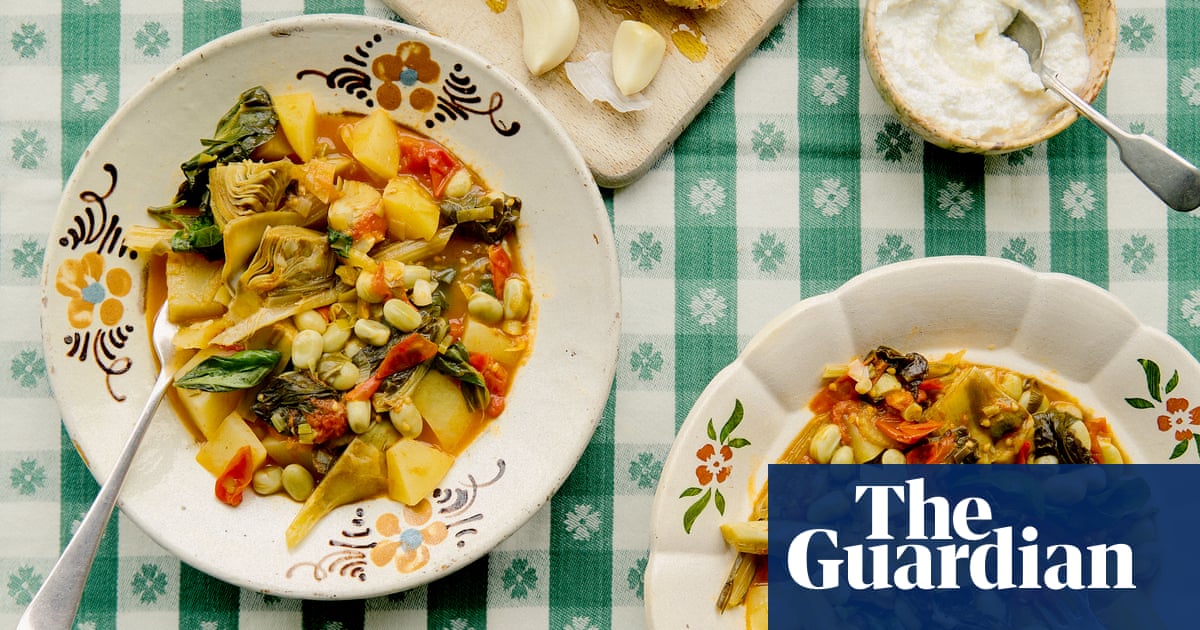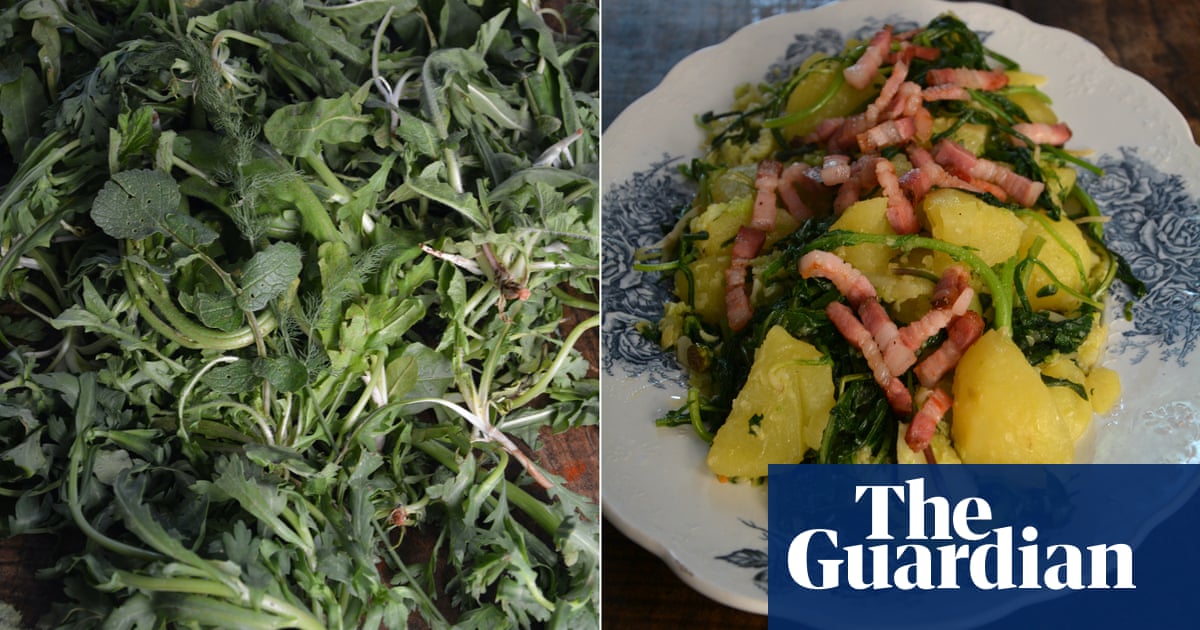
Broad beans are back – long, green fingers with the odd black nail. And so are the warning signs, for those who suffer favism (a rare but acute haemolytic syndrome), as well as for those, such as my neighbour, who think that fave are an abomination. For fans, the first young beans are good raw, with pecorino or cheddar. In Lazio and central Italy, scafa is dialect for a broad bean pod, and scafare the verb for removing the beans from their pods; therefore, scafata is a dish involving podded beans. As you might expect from a dish shared by different regions, scafata has as many variations as cooks that make it, but, broadly speaking, it can be described as somewhere between a brothy stew and a dense soup involving broad beans and other spring vegetables, such as chard, onions, potatoes and artichokes.
The cooking method is what I think of as a steamy braise, which is also a possible chapter title for an as-yet-unwritten detective story. One steamy braise might start with a letter containing a feather and a ring. The other – this one – starts by cooking vegetables in a generous amount of olive oil. Once they are just starting to soften, liquid is added and the pan half covered, allowing the vegetables to soften further in both the liquid and steam, which (having done its job) evaporates, leaving behind a vegetable liquor and an olive oil broth.
Scafata almost certainly came about because of an abundance of broad beans, so it is very much a spring dish. And while it is wonderful made with freshly podded beans, it is equally good made with frozen ones, the vegetable that I think best demonstrates the miracle of freezing. Artichokes, on the other hand, need to be fresh, and a tender variety that can be trimmed, both stem and leaves.
I have written about this trimming method before – it’s a circular whittle that takes off all the inedible parts – the dark outer leaves and tips, and the outer layer of the base and stem – and turns the head of the artichoke, with its armour-like cladding, into a small, naked tulip: a shock if you are used to admiring and cooking artichokes whole, then eating them leaf by leaf. But such trimming renders artichokes entirely edible, so they can be cut into wedges and simmered into velvet softness, with a singular taste that is somewhere between mushroom, asparagus and celery. Such artichokes are abundant to the point of annoying in some places and impossible to find in others, and can be substituted with asparagus or peas. Alternatively, just increase the proportions of everything else.
Scafata benefits from a rest, so the flavours can settle and come together, while its brothy consistency means it is best served in shallow bowls. It is wonderful with cheese of all kinds, especially sheep and goat’s milk cheeses. If you are serving it with ricotta, you could whisk it with a tablespoon each of milk and parmesan and some freshly grated lemon zest, which makes a soft cream to blob on each bowlful. Serve with bread or toast.
Scafata (spring stew of broad beans, chard, potatoes and artichokes)
Typical of Lazio in spring, scafata is somewhere between a soup and a nicely oily stew, and is best served at room temperature with a spoonful of seasoned ricotta and a big pile of garlic and olive oil toast.
Prep 15 min
Cook 45 min
Serves 4
100ml olive oil
1 small bunch spring onions, trimmed and roughly chopped
2 celery sticks, trimmed, strings pulled away and thinly sliced
Salt
200g broad beans (fresh or frozen), or peas
400g cherry tomatoes, halved
2 large potatoes, peeled and diced
2 artichokes, trimmed and cut into wedges, or asparagus or peas
1 pinch dried oregano
200g chard or spinach, washed
1 handful fresh basil leaves
To serve
200g ricotta
2 tbsp parmesan
2 tbsp whole milk
Finely grated zest of 1 unwaxed lemon
Slices of bread, toasted, rubbed with garlic and drizzled with olive oil
In a large, heavy-based pan, warm the oil, then gently fry the spring onion and celery with a pinch of salt for about 10 minutes, until translucent and soft.
Add the broad beans, tomatoes, potato, artichokes, oregano and another pinch of salt, and stir for a few minutes. Cover with 500ml water, half-cover the pan with a lid and leave to simmer for 20 minutes. Add the chard or spinach, simmer for 10 minutes more, until the vegetables are soft and there is just a little liquid surrounding them, then tear in the basil.
In a small bowl, whisk the ricotta with the parmesan, milk and lemon zest to taste. Serve the stew at room temperature with the seasoned ricotta and some toast rubbed with garlic and zig-zagged with olive oil on the side.












